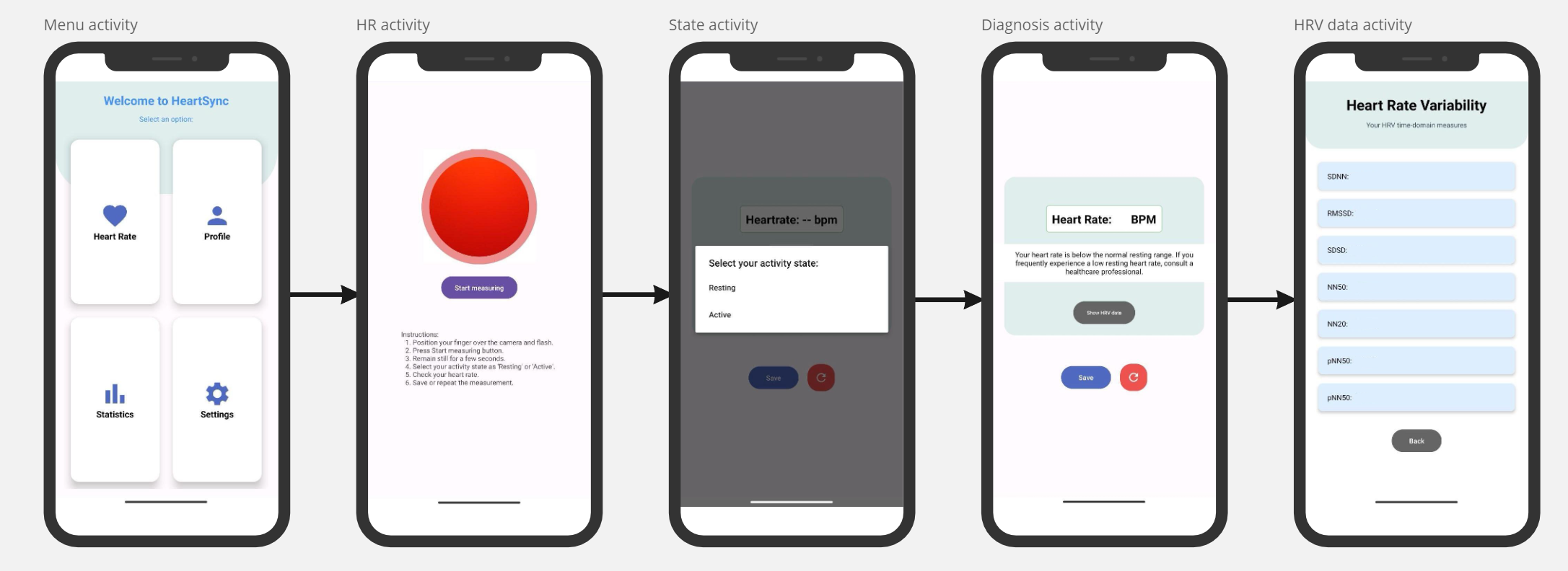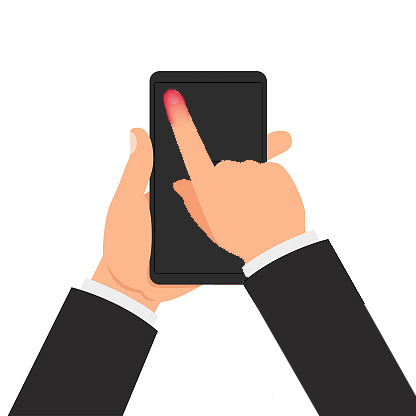Introduction
This project was developed as my Final Degree Project (TFG), aiming to explore the potential of mobile applications in health monitoring.
Cardiovascular diseases are a leading cause of death worldwide, making heart rate monitoring an essential health metric.
In this project, I developed HeartSync, an Android application that allows users to measure both heart rate (HR) and heart rate variability (HRV) using just their smartphone’s camera and LED flash.
How It Works
HeartSync utilizes photoplethysmography (PPG), a technique that detects changes in blood volume by analyzing the light absorbed by the skin. The app:
- Captures light reflection from the user’s fingertip using the smartphone’s camera.
- Analyzes color intensity variations to extract HR and HRV data.
- Provides users with real-time feedback and data storage via Firebase.
📱 App Screens
Here’s an overview of the different screens in the HeartSync app:

🏥 How to Measure Heart Rate
The app measures heart rate using photoplethysmography (PPG). The user places their fingertip over the smartphone’s camera, which detects variations in light absorption.

Place your finger over the rear camera and flash.

Hold your phone still during the measurement process.
Key Features
- 📊 HR & HRV Monitoring: Measures SDSD, RMSSD, SDNN, NN50, NN20, pNN50, and pNN20 for a detailed cardiac assessment.
- ☁ Cloud Storage: All measurements are securely stored in Firebase, allowing users to track trends over time.
- 📈 Statistical Insights: The app displays the average and max heart rate from the last 24 hours.
- 🏥 Health-focused: Aims to support telemedicine by offering an accessible and non-invasive solution for cardiac monitoring.
Results & Future Improvements
HeartSync was tested against a medical-grade pulse oximeter, showing a strong correlation between both measurements. Future enhancements could include:
- Integrating machine learning for improved signal processing.
- Expanding to iOS to reach a broader audience.
- Adding AI-based health insights.
Conclusion
With mobile technology becoming increasingly omnipresent, apps like HeartSync have the potential to revolutionize remote health monitoring. By leveraging PPG and cloud storage, we can empower individuals to take control of their heart health in an easy and accessible way.
Keywords: heart rate, heart rate variability, photoplethysmography, cardiac monitoring, mobile application, digital health.